The In Win 303 Case Review: Minimalist ATX with Tempered Glass for $93
by E. Fylladitakis on October 12, 2016 8:00 AM EST- Posted in
- Cases/Cooling/PSUs
- In-Win
- ATX
- Case
- In Win 303
- InWin 303
The Interior of the In Win 303
A fine detail that one can notice once the side panels are removed is the foam strip that In Win applied on the interior edges of the side panels. These strips seal the space between the side panel and the case, preventing scratches and cancelling certain possible rattling/vibration noises.
The removal of the case’s panels reveals a peculiar interior, with the PSU compartment above the motherboard tray but taking only the right half of the space. There are no cages for the drives or other items, leaving the interior looking very plain and empty. The metal frame that separates the PSU compartment from the rest of the case has slots for up to three 120 mm fans or an equivalent liquid cooling radiator. These fans will be forcing air out mostly from the right side panel, but some of the air flow will be getting pushed behind the motherboard’s tray.
The motherboard tray, the PSU compartment frame and the expansion card covers are black, whereas every exterior panel of the case is white. There is a fair opening on the motherboard tray for the installation of aftermarket CPU coolers that should be large enough for any ATX motherboard. There are openings to the top and right side of the motherboard for the cables, as well as two more openings below the motherboard in case a Micro ATX or Mini ITX motherboard is used. None of these openings have rubber grommets.
There are two slots for 3.5”/2.5” drives to the right side of the case, behind the motherboard. The small metallic drive trays are removable and one 3.5” or 2.5” drive can be installed on each of them using the supplied screws.
Two more drive trays can be found inside the system area, next to the rail where the large expansion card optional support braces can be attached. These trays can only accommodate 2.5” drives.
For the means of this review, we installed a Corsair AX760i with the red cable set, for strong visual contrast. The AX760i easily fits inside the PSU compartment of the In Win 303, with plenty of room for managing the cables. The excessive 32 mm clearance behind the motherboard tray makes cable management very easy. Note however that the PSU is installed with its fan facing inside the system, forcing it to draw air from the inside of the system area rather than from the outside of the case. Its position will also have its fan right in front the first 120 mm fan, if one is installed. This can significantly increase the operational temperature of the PSU if a radiator is installed there, as the thermal energy from the radiator will be getting released right in front of its intake.
The system area of the In Win 303 is roomy but narrow. There is virtually no clearance between the motherboard and the bottom of the case with an ATX motherboard installed, preventing the installation of a liquid cooling radiator at the bottom of the case. If a Micro ATX or Mini ITX motherboard is installed however, the use of a radiator up to 360 mm long is very possible. A radiator up to 360 mm long can be installed on the PSU compartment frame and a small 120 mm radiator can be installed on the rear panel of the 303. Liquid cooling may be necessary for an advanced system, as the clearance for air coolers is only 160 mm, ruling out many top-tier air coolers. Cards of virtually any length can be installed, but we strongly recommend cards up to 350 mm long, as longer cards will block the cable openings and the 2.5” drive trays.


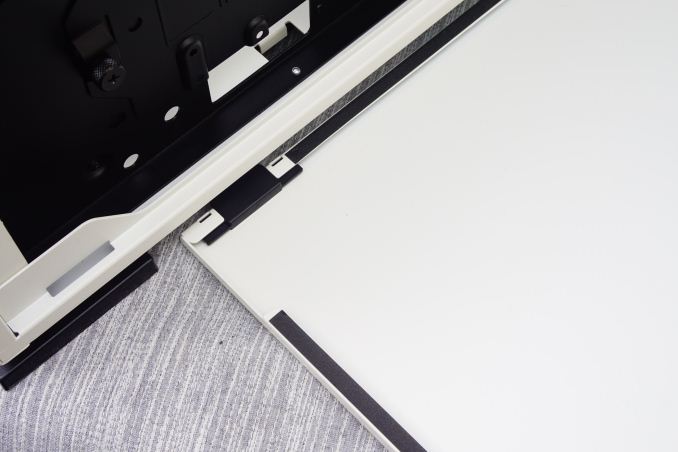
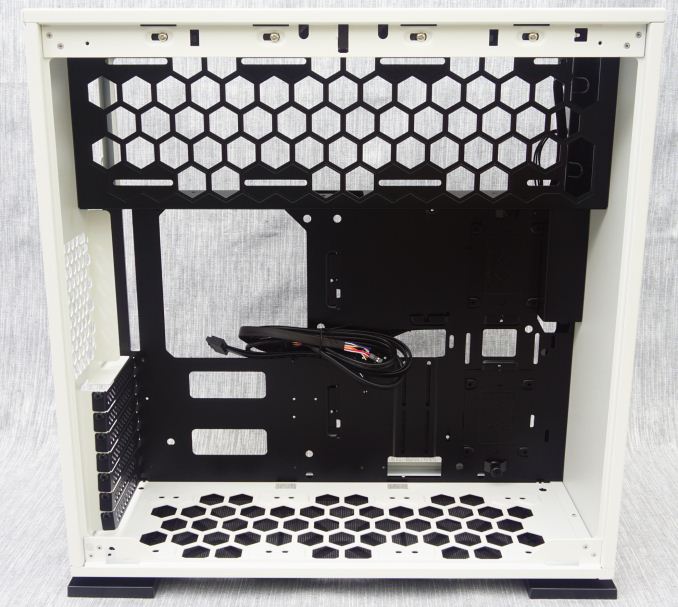
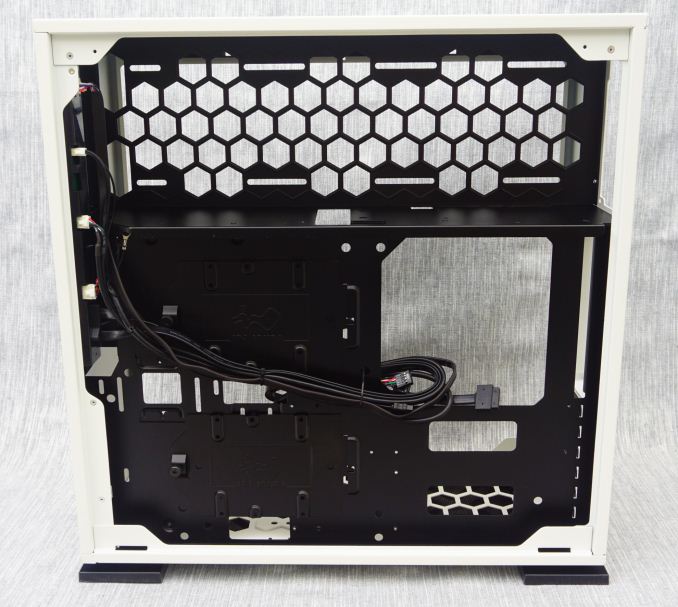
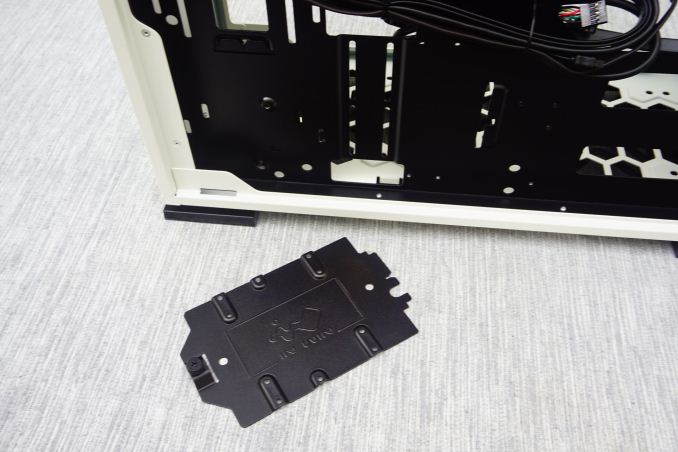
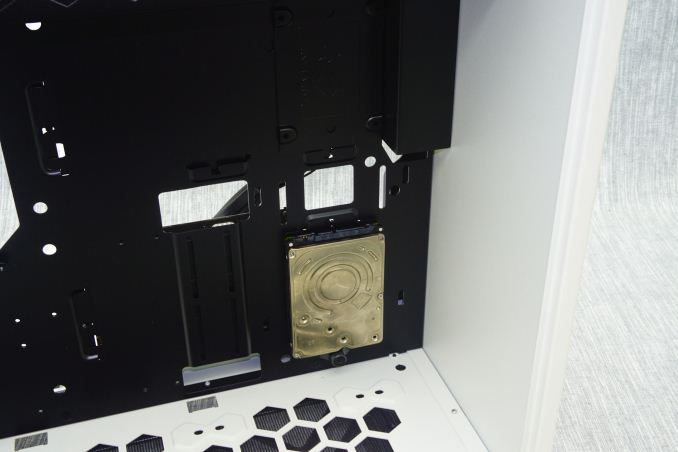

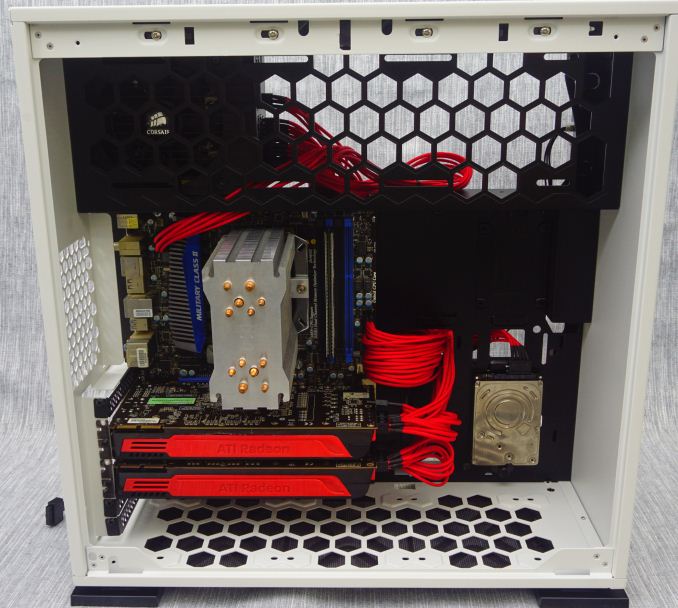
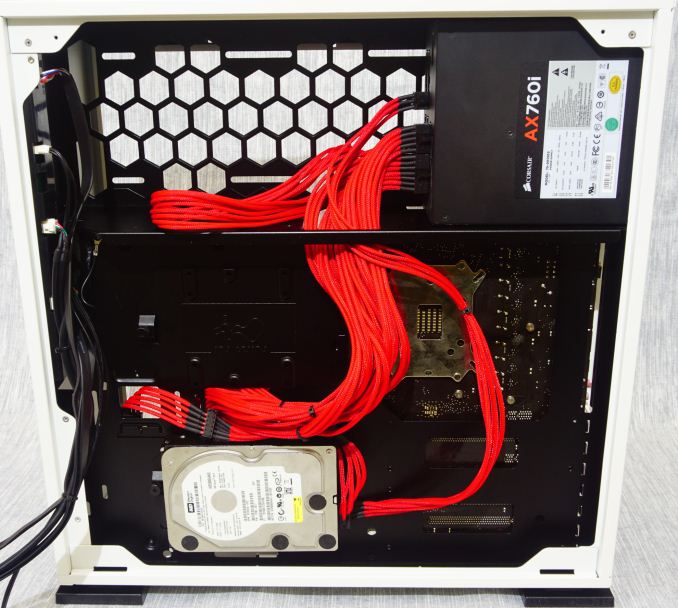








43 Comments
View All Comments
Aerodrifting - Wednesday, October 12, 2016 - link
Is everyone purposely avoiding the topic on cooling or plain forgot?There is little clearance to install fans on the "bottom air intake" due to any ATX motherboard extends to the bottom of the case, Not to mention the space underneath the case is tiny due to short case feet. The top/side vent is a joke.
Sure the glass looks good, But I will not consider building any high end system inside this case if it's going to cook the components with its "no-airflow-design"
DanNeely - Wednesday, October 12, 2016 - link
I suspect the bottom holes are intended as passive intake for a negative pressure design with the fans on a top mounted radiator providing the overall airflow. I'm not a fan of bottom intake without casters or really big feet. On a carpet standard tiny feet tend to sink in deep enough to plug them entirely. Not a problem on hardwood, but your case ends up acting like a vacuum cleaner and the bottom mounted filter doesn't have visible indicators when it gets filthy and clogged.Aerodrifting - Wednesday, October 12, 2016 - link
My point exactly, Also "negative pressure design" never worked well, It's more of an excuse and translate to "we messed up on the airflow design".I have been building computer for over 10 years, In Win never struck me as a quality case maker. One day they woke up and suddenly decided to make a case with glass side panel and put a $300 price tag on it (909) does not put them in league with companies like NZXT, Corsair, Cooler Master who knows what they are actually doing.
dsraa - Wednesday, October 12, 2016 - link
Ewww...what the hell is with that gross design on the non-windowed side??? What is that???DanNeely - Wednesday, October 12, 2016 - link
'artsy' vent holes for the topside mounted radiator you need to install to give this thing decent cooling.jsntech - Wednesday, October 12, 2016 - link
I've been using the In Win BUC since a few months after I read AT's review (http://www.anandtech.com/show/4303/inwin-buc-100-d... I've been a big fan of the BUC the whole time I've had it for my i5-2500K system.No plans to upgrade anytime soon, but this 303 looks like it'd be a great replacement. I especially like the decent sound dampening design.
Iketh - Wednesday, October 12, 2016 - link
Here's an idea for case reviews. Add lines from the paragraph to the parts referred in the paragraph.DCide - Wednesday, October 12, 2016 - link
I usually use much smaller cases, so I'm not particularly interested in this one, but I really like the fact that it has 2 USB 3.0 plus 2 USB 2.0 ports on the front. The majority of motherboards have at least this many internal connectors, so it's a good idea.I wish more of the smaller cases would start to employ this arrangement.
jabber - Thursday, October 13, 2016 - link
Nah I'd get rid of the logo, the audio ports (well at least the mic socket) and just have two front USB3.0 ports.DanNeely - Sunday, October 16, 2016 - link
The front panel audio jacks need to support headphone+mic for wired gaming headsets. If they can do it with a combined port fine; if not the discrete mic port is still needed.